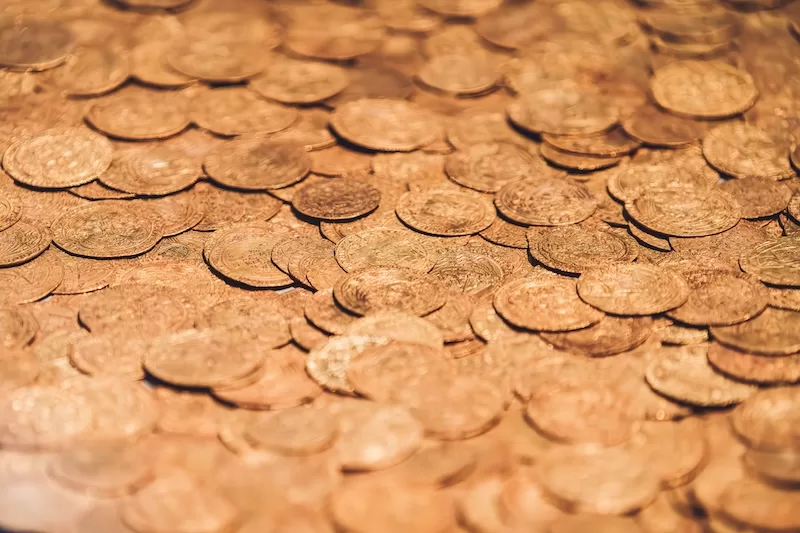“Gold is money” J.P. Morgan liked to say. “Everything else is credit.” As one of history’s savviest businessmen, it’s no surprise his name sits atop one of the largest banks in the world.
Gold has been money around the world for more than 5,000 years. Generations may regularly forget about its importance, but they quickly remember gold’s power when it’s needed. And despite the multitude of financial instruments competing for investor dollars—stocks, crypto, and beyond—gold remains as relevant today as it was centuries years ago.
In fact, given our shaky global economic climate, this seems like an excellent time to realize—and once gain embrace – the power of gold.
A few months back, I was asked to join a panel discussion on financial innovations that included experts on cryptocurrency, special purpose acquisition companies (SPACs), and other new tools. Why was the gold expert invited? While it’s not new, the ways in which investors can access and leverage gold have made huge advances in recent years, making it as useful and relevant today as most other forms of currency.
Gold’s History of Ups and Downs
We don’t have the time or space to recount gold’s full story here (a good subject for a future column), so I’ll start in 1971, when President Nixon “closed the gold window.” In other words, he ended Americans’ ability to directly convert gold into U.S. dollars, and vice versa.
At the time, the U.S. had begun winding down its military presence in Vietnam, a war that cost the country dearly in lives and money. Domestically, Americans were beginning to struggle with stagflation—a combination of anemic economic growth and crippling inflation.
With the legalization of gold in the U.S. in 1975, its value soared to new all-time highs of about $850 per ounce. Then, the collapse of the Soviet Union brought the Cold War to a close and ensured American economic primacy.
As conflict declined globally and freedom and democracy spread, gold became an after-thought and its value fell to $250 per ounce from 1999 to 2001, down 70 percent from its 1980 highs.
With the dawn of the digital age in the early 2000s, the U.S. economy began another period of expansion as countless investors got rich from the explosive growth of many tech businesses. The Great Recession, the housing bubble and the global financial crisis collapsed markets worldwide, spurring a “re-learning” of gold’s value.
In September 2011, it hit a new all-time dollar-value high of $1,921 per ounce, just as governments swooped in to bail out markets, banks and investors with an easy money policy that lasted for the next decade.
Back then, the price of capital was cheap. You could borrow money at next-to nothing to invest in anything from cryptocurrencies to high-flying tech stocks. Values soared thanks to inflated currencies worldwide.
This up-and-down pattern continued as gold sank to $1,050 an ounce, then came the COVID-19 pandemic. Markets tanked and gold made another comeback.
Under Appreciated. Always Valuable
For 5,000 years, gold has held great value but has not always been greatly appreciated. Fickle investors fall in and out of love with it, which is why famed economist John Maynard Keynes described it as a “barbarous relic” in 1924.
Yet when gold is needed, it always delivers. Today, America’s rampaging national debt has a negative financial impact on governments, businesses, and consumers. After a rapid increase in interest rates in virtually every major economy, rate cuts are on the horizon as governments, corporations, and individuals struggle under the weight of massive debt.
Economic hardship is leading to social unrest and geopolitical crisis. Our world is fractured and reeling. And just in time, gold is again achieving new heights. In fact, it has been consolidating at all-time highs for five years and may now be headed for another surge.
Historically, gold and gold stocks significantly outperform corporate stocks following the first rate cuts at the end of a monetary tightening period. For the world’s reserve currency, the U.S. dollar, that highly anticipated first rate cut is set to come this month.
Given the historical pattern and the performance of gold in previous bull markets, at some point in the near future I expect the value of gold to peak at two to three times the current high of $1,921 per ounce.
An Abundance of Options
The numerous ways to invest in gold today enhance its attractiveness. You might choose to own certificates or warehouse receipts, which represent gold held by a third-party depository, either onshore or overseas. Alternatively, you can invest in shares of an exchange-traded fund (ETF) that tracks the gold price, provided the fund manager is competent. Another option is to buy stock in gold mining companies. Additionally, you can trade gold futures and options, essentially speculating on gold’s future value.
At the same time, you can still wear your gold wealth as jewelry or own the most popular government-issued coins, like the U.S. Eagle or the Canadian Maple Leaf. You could buy from the finest refineries, such as Perth Mint gold bars, and it’s all approved by the London Bullion Market Association (LBMA) —the standard bearer for gold—so you know it’s top quality.
These options allow for unprecedented flexibility in how you hold your gold. Asset manager Dimitri Speck likes to say, “Gold is the only thing that can cross borders without a passport.”
His point is not that gold is an accomplished traveler, but that there’s no better global measure and store of value. This is why gold will remain an excellent investment and should be an essential piece of any informed expat’s portfolio.
So if you live overseas and are wondering where to invest, take a look at the latest trends in gold. Despite its ups and downs over the centuries, gold is as valuable today as it has ever been—possibly even more so.
It’s not the least expensive precious metal (that’s silver) or the heaviest (platinum), but like J.P. Morgan said, it is the best store of value.
—————-
Rich Checkan is a regular Escape Artist contributor and president and COO of Asset Strategies International. Learn more here or e-mail him at infoasi@assetstrategies.com.
Rich Checkan
Contact Author
"*" indicates required fields
Stay Ahead on Every Adventure!
Stay updated with the World News on Escape Artist. Get all the travel news, international destinations, expat living, moving abroad, Lifestyle Tips, and digital nomad opportunities. Your next journey starts here—don’t miss a moment! Subscribe Now!










